Inside Tesla’s Futuristic Robotaxi: Elon Musk’s Highly Anticipated Driverless Cab Will Have NO Steering Wheel or Pedals — and Could Cost Less Than $30,000
You could easily mistake it for a prop from the latest sci-fi blockbuster.
But after years of promises, Elon Musk now says Tesla’s self-driving Robotaxi will soon become a reality.
The futuristic autonomous car has no steering wheel, pedals or rear window and offers just enough space for two passengers.
The all-electric vehicle was launched last night at Tesla’s ‘We, Robot’ event and costs less than $30,000 (£23,000) and just 20 cents (15 cents) per kilometer.
In fact, tech fans may not have to wait long before it hits the streets, as the billionaire SpaceX founder claims the Robotaxi will be available before the end of 2027.
Tesla’s futuristic Robotaxi will have no steering wheel, pedals or rear window. The two passengers simply sit back and let the car drive itself
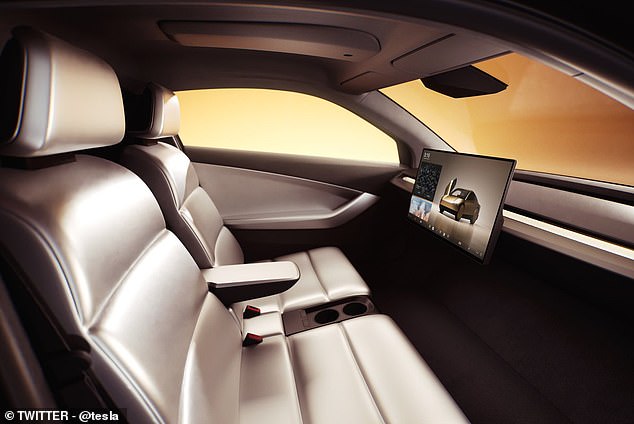
Launched last night at Tesla’s ‘We, Robot’ event, the Robotaxi is the first Tesla vehicle designed to be fully autonomous. The minimalist interior features a large screen and two cup holders
Tesla’s new Robotaxi will be the first car that the company develops specifically for autonomous driving.
The space-age design features butterfly-wing doors that open upward to reveal a small cabin, just big enough for two passenger seats.
The sleek cabin appears to be a product of the extremely large trunk that opens where the rear window would normally begin.
The interior is minimalist and contains very few attributes that we normally associate with cars.
Interior photos show just two cupholders and a large screen similar to those in other Tesla models.
According to Elon Musk, who introduced the new car on stage in Hollywood, the Robotaxi won’t even have a charging port for its electric batteries.
Instead, the Robotaxi will ride over an inductive charging station and be powered wirelessly, allowing it to be charged without human assistance.
Stripped of any manual controls, the car gives more space to its two passengers to sit back and relax.
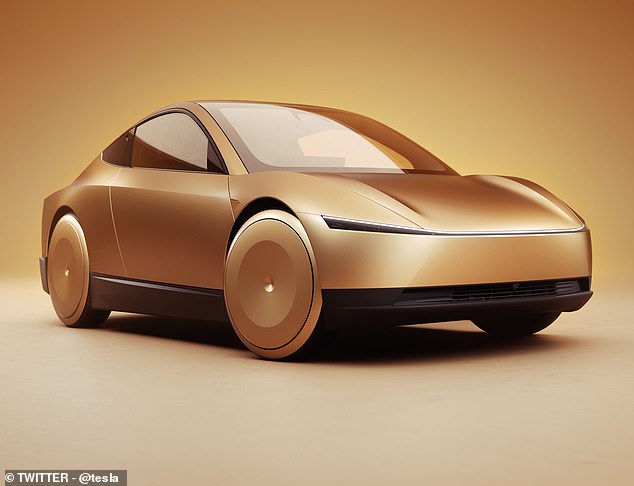
The new Tesla Robotaxi is expected to cost less than $30,000 (£23,000) and run just 20 cents (15p) per kilometer
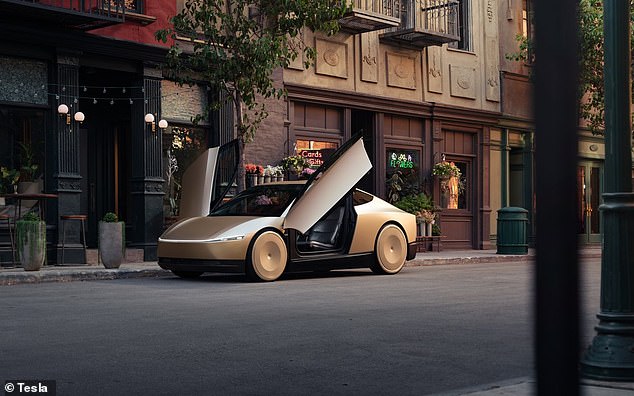
The futuristic design includes butterfly-wing doors that open vertically to reveal a small cabin with two seats
Speaking at the event, Musk claimed that the Robotaxi would be more like a “comfy little lounge” than a traditional vehicle.
He said, “You can do whatever you want while you sit in this comfy little lounge, and when you get out, you’re at your destination.”
The ultimate goal is for the Robotaxis to form the basis of a ride-sharing service such as Uber.
Robotaxi owners can lease their car to provide rides for other people when they are not using it.
That could mean letting go of your car to make money while driving late-night travelers while you sleep safely in bed.

To launch the new vehicle, Tesla CEO Elon Musk was driven through a closed film site in Los Angeles to a specially prepared stage
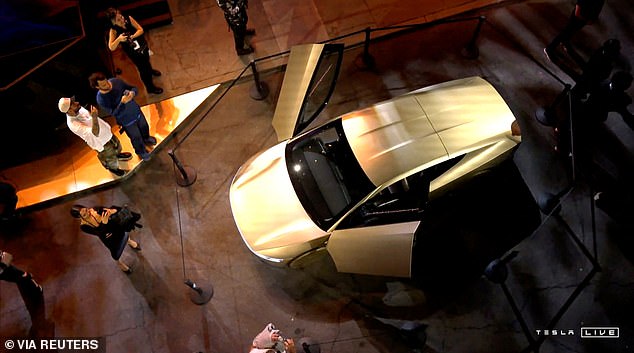
In the future, Musk says people will be able to take their cars out and make money through a ride-hailing service while they’re not using them
‘The vast majority of the time, cars just don’t do anything. But if they are autonomous, they can be used five times more, maybe 10 times more,” Musk said.
In the future, Musk claims that individuals could own entire Robotaxis fleets and “care for them like a shepherd cares for their flock.”
During the “We, Robot” event – likely a reference to Isaac Asimov’s novel “I, Robot” – Tesla also unveiled a larger self-driving bus, the Robovan.
The stylized design of this van has no controls on the inside, but offers enough space for 20 seats.
Alternatively, Musk claims that the Robovan can be configured to autonomously transport goods around a city.
Musk says, “If you want to transport a sports team somewhere or if you really want to reduce travel costs to 5-10 cents per mile, you can use the Robovan.”
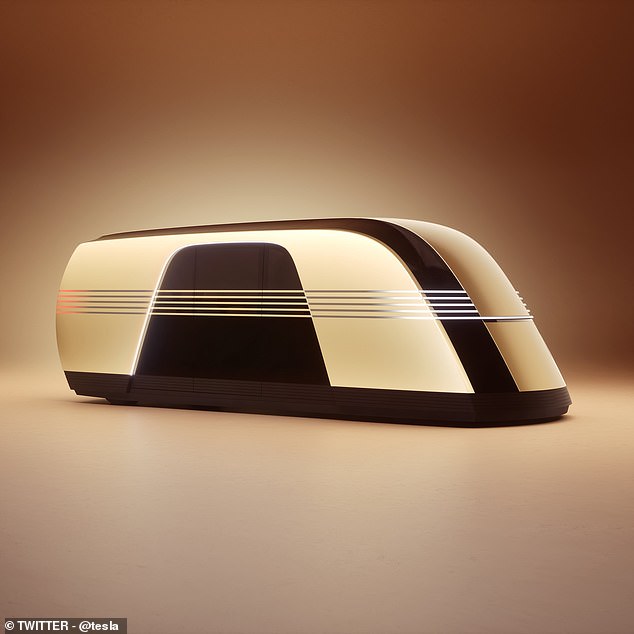
Tesla also unveiled its autonomous bus, the Robovan. It will also be fully self-driving and contain no manual controls
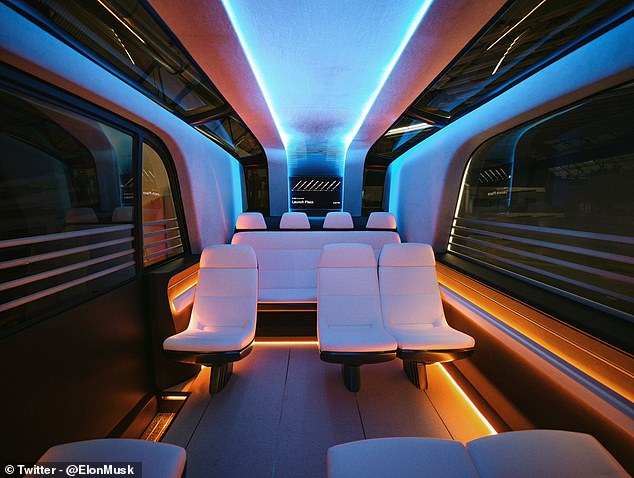
The Robovan can be configured to carry up to 20 people or transport cargo around the city
Commenting on the Robovan’s striking exterior design, which features a sleek black and gold aesthetic, Musk said Tesla’s ambition was similar to the design of the Cybertruck.
“We want to change the look of the roads,” Musk said.
‘The future must look like the future.
Tesla also used the event to showcase its redesigned Optimus robots, which stood in the crowd of guests waving and serving drinks.
At the end of the event, a group of robots took to a neon stage and danced to Daft Punk’s Robot Rock.
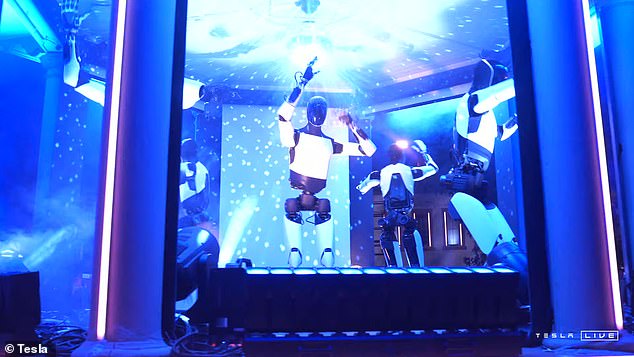
The event featured a fleet of new Cybercabs, as well as Tesla’s Optimus robots dancing and serving drinks
Musk predicted the robot’s price would be comparable ‘at scale’ to a $30,000 (£23,000) Robotaxi.
Tesla’s CEO predicted that the Robotaxi would launch fully autonomous driving in Texas and California next year, paving the way for production of the Robocab in 2026.
Qualifying his statement, Musk said the car would be available before the end of 2027, adding: “I tend to be a little bit optimistic about the timelines.”
That over-optimism is something that has been a hallmark of Tesla’s fully autonomous ambitions since the company’s founding.
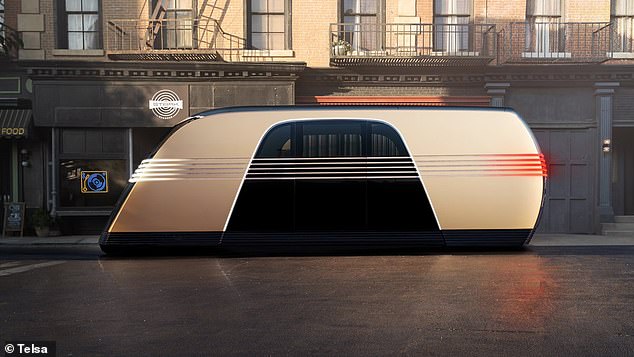
Elon Musk says the Robovan will bring travel costs to between five and ten cents per mile
Back in 2016, Musk promised that Tesla’s self-driving cars were just two years away.
In 2018, Musk was still certain that self-driving cars would happen in a year, and in 2019 he said again that fully self-driving cars would come that year.
However, Tesla is already behind rivals Waymo and Cruise, which have successfully deployed small fleets of autonomous taxis in multiple US cities.
Tesla’s self-driving cars will also likely rely on the camera and computers on board, rather than the more expensive depth-sensing lidar technology used by other companies.
Likewise, the safety of Tesla’s current autonomous driving capabilities is coming under increasing scrutiny.
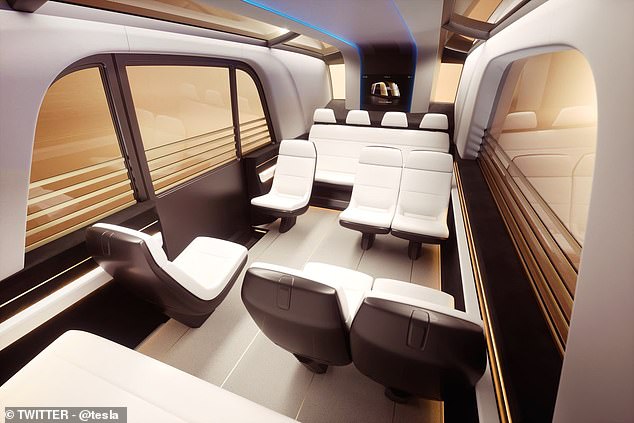
The Robovan is expected to arrive sometime after the Robotaxi’s launch in late 2026
Earlier this year, Tesla was forced to settle a lawsuit filed by the family of an Apple engineer who died in 2018 after his Tesla crashed into a safety barrier while on autopilot.
Additionally, the U.S. National Highway Traffic Safety Administration forced Tesla to recall Full Self-Driving in February because it allowed speeding and violated other traffic laws, especially near intersections.
This has many concerned about whether Musk will be able to deliver the fully autonomous vehicles he has long promised.
Bryant Walker Smith, a law professor at the University of South Carolina who studies autonomous vehicles, says, “Tesla gives us that demo every year, and it doesn’t reassure us.
“I don’t know why the headlines keep saying, ‘What is Tesla going to announce?’ instead of, “Why does Tesla think we are so stupid?”
